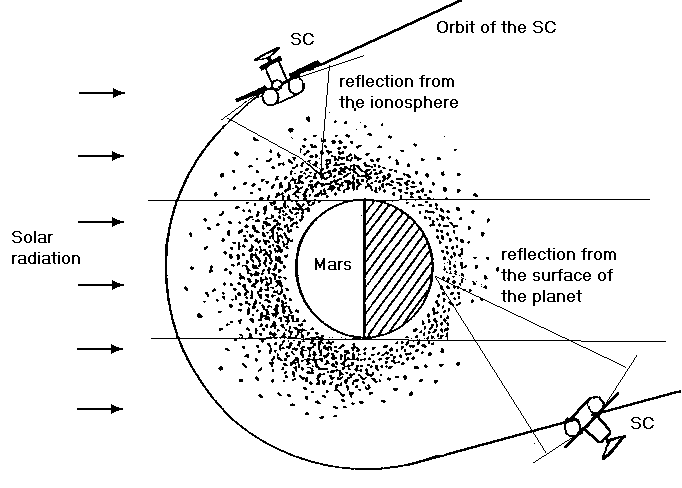
|
Experiment: LWR
LONG-WAVE RADAR
RADAR STUDIES OF MARS
Main scientific objectives:
GRUNT: the study of the underlying surface of the Martian cryolithospheres, the determination of the depth of occurrence of ice-bearing rocks and their geographic distribution, the estimation of dielectric parameters of soil;
PLASMA: the global distribution of height profiles of electron number-density in the Martian upper ionosphere to study the dynamics of the solar wind interaction with the Martian upper atmosphere.
Method of measurements is based on generating pulsed (with a linear modulation frequency) radio signals, measuring the power of signals reflected from the surface at the night side of the planet, to determine the reflection coefficient within a wide spectral range. This method also uses measurements of time delay for signals reflected from the ionosphere at different heights in order to obtain electron number-density profiles.
| Main characteristics:
| |
| |
| Frequency range | 0.17 - 5 MHz |
| Number of discrete frequencies | 56 |
| Frequency modulation period | 0,27 s, 1,08 s |
| Frequency deviation | 15 kHz |
| Range measurement error | 3,5 km |
Sounding range:
| |
| during soil sounding | 150-3000 km |
| during ionogram recording | 150-5000 km |
| Total mass | 35kg |

Cooperation: Russia, Germany, USA, Austria.
| Contact persons: | V. Kurt vkurt@dpc.asc.rssi.ru
| | N.Armand (PI) armand@ire.rssi.ru
|
|

